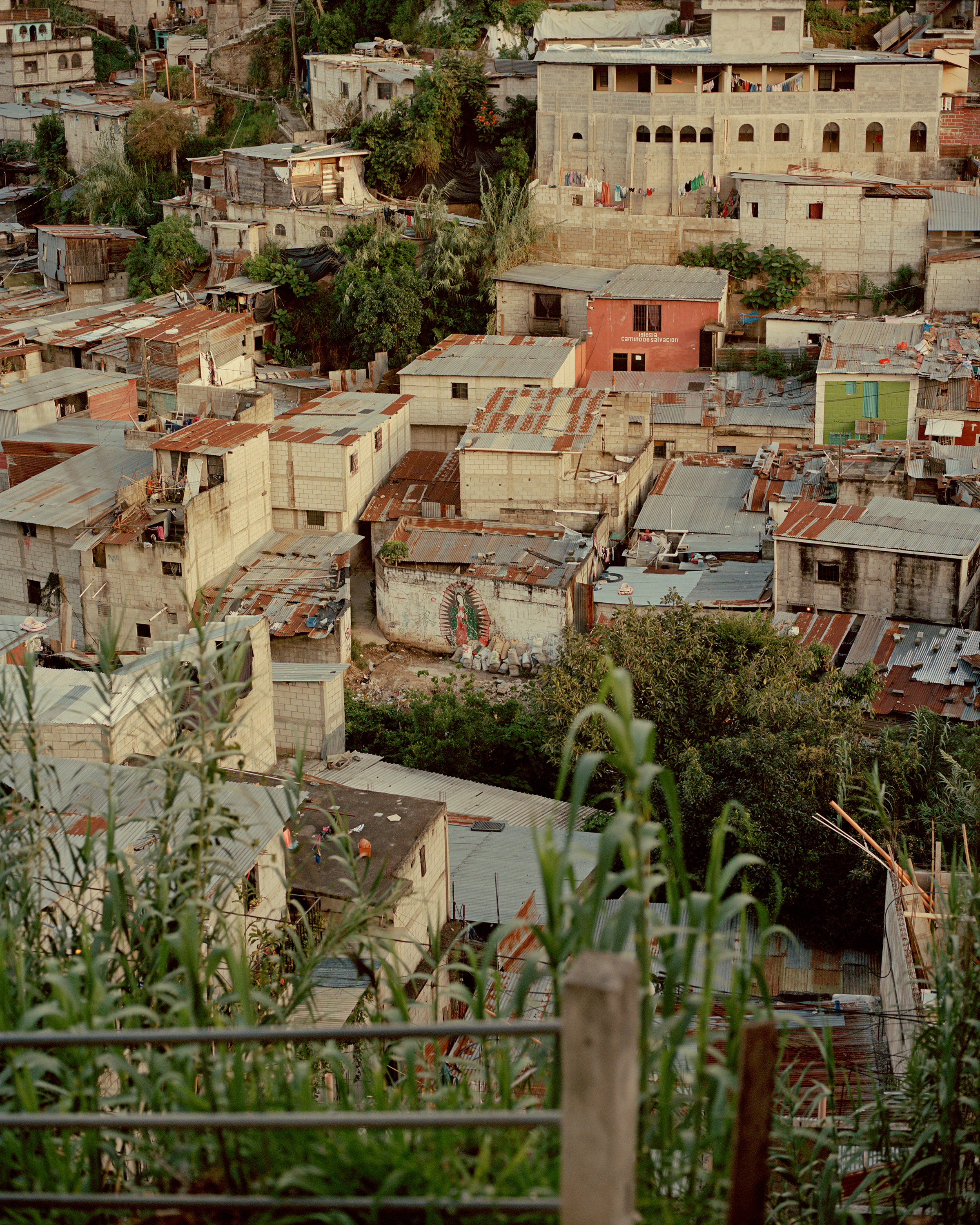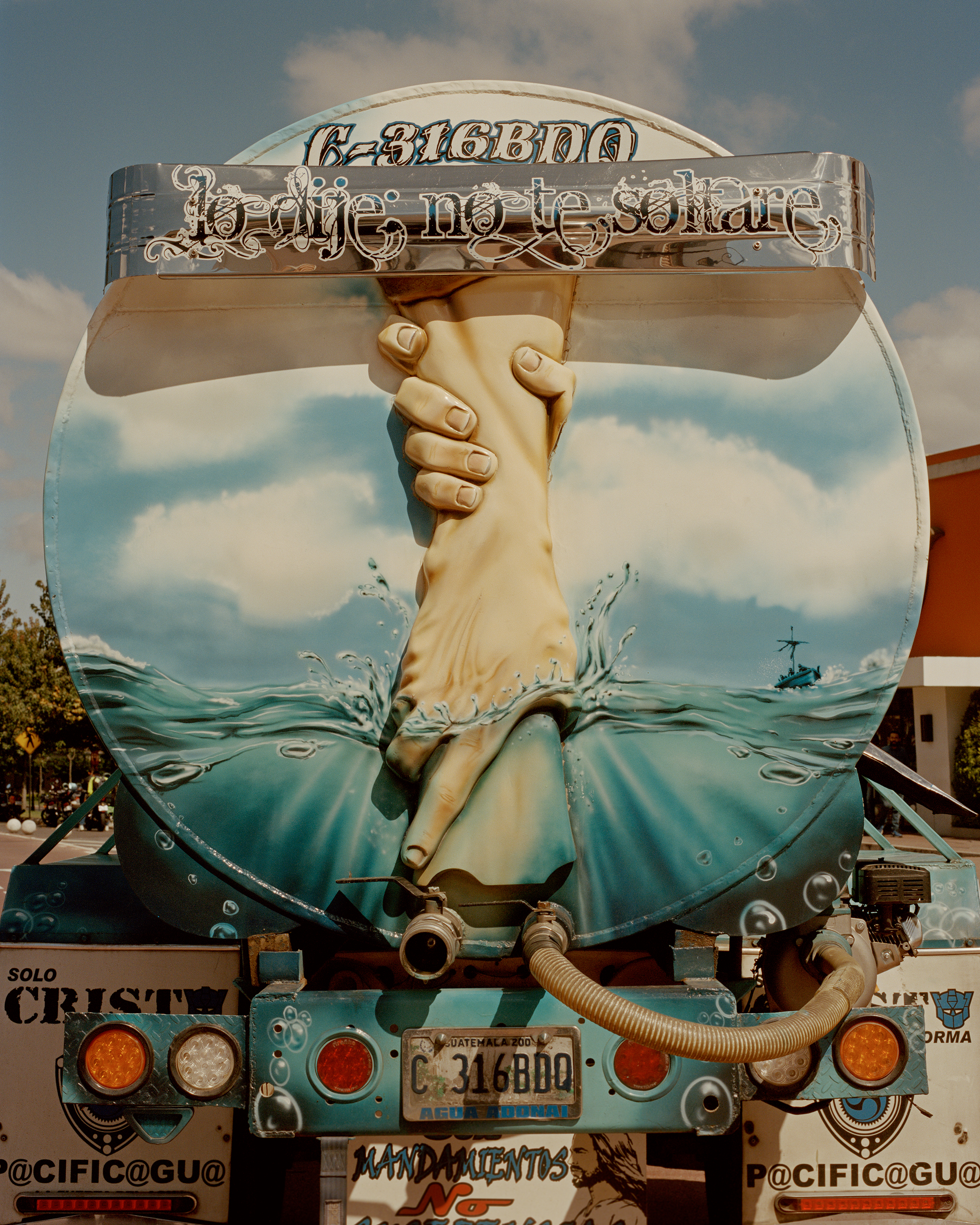Juan Brenner

February 23rd, 2021
Juan Brenner is a self-taught street and fashion photographer from Guatamala City. We spoke with Juan about his recent book published by Pomegranate Press, “The Ravine, The Virgin & Spring” which takes a unique approach in documenting the historical complexities and charm of the artist’s hometown.
When did you first get into photography?
I started shooting in Guatemala in the late 90s; I was really young. My first approach to photography was 100% accidental. I always knew I wanted to be an artist; I just didn’t know photography was my path. Since the beginning I had “a thing” for doing portraits, shooting people was where I felt comfortable. Also, I’m 100% self taught so shooting portraits gave me confidence. I felt like I didn’t need to be all “Ansel Adams” with the work.
What was the inspiration for you to take a deeper look at your hometown of Guatemala City for "The Ravine, The Virgin and & Spring?"
Since I started shooting again (after a seven year hiatus), I felt like I had to get out of my comfort zone as much as I could. I left Guatemala when I was very young and it was both a creative and psychological escape from this place. I really needed to leave so I stayed as far away as possible to anything “Guatemalan”. I’m older now and I’ve done basically everything I needed to do in other markets; it was time for me to get back in an intimate situation with the place I coexist with.
Also, Guatemala City is a very intricate and complex place, really weird. It’s very hard to explain the dynamics that rule this city and I felt that it was important to document those things; the “b-sides”, the stuff almost no one (even people that live here) has contact with.




Much of the book was shot over the past year; how did social distancing and other covid restrictions affect the way you photographed, if at all?
It was a major player on why and how I shot this project. The entire pandemic and financial problems were wearing on me really bad ( so much stress). I started shooting in November 2019 and didn’t have anything defined 100%, I mean I knew I wanted to work in the city but my research was weak still ; so shooting by myself and trying to stay away from people gave me a really good stance. The city was mostly empty so that helped a lot. Also, spending all that time home gave me space to understand the city from a more technical way; history, maps, stories and many other tools from the internet helped me re-shape my idea.
On a negative note, it was really difficult to finish this project, I started shooting everything on film and it became almost impossible to do it that way as I process and scan all my work in NY. I just kept burning film expecting to be able to travel at some point. Finally I got to see the second batch of film in October right before we edited the book.
I'm very drawn to the sculptural still-lifes throughout your edit (ie: the titled tire stack, the dainty, crooked rust chain and the delicate, orange draped tarp). What drew you to these subjects and what do they represent to you?
Accidents, I really wanted to show how this city is a total accident, from the way it’s planned (or not planned at all), its aesthetic, the way people move, mass transportation, architecture and mainly social dynamics are very obtuse. I’m also obsessed with shooting still lives and landscapes, I used to NEVER do it, I was obsessed with shooting portraits only, it was my way to feel special I think, but now I understand the power of context, the weight of the “every day object”, the accident, the normal things.



You worked in fashion for many years; how did working in that industry shape the way you shoot on the street?
Oh shit, that’s a great question, I’m still very self conscious of my street photography, of everything I’m doing for that matter. Fashion taught me how to direct and create situations from scratch, so it’s weird to have to adapt, to not be 100% in control, I think I cannot answer that question, I’m still finding my way though this new moment of my career; everything feels so new you know?
You mentioned your work over the past few years has focused more on getting out of your comfort zone. What inspired you to push these boundaries?
I was bored basically, and it was really hard for me to accept and understand that my fashion photography had limits, I knew I was not gonna be Mario Sorrenti or Peter Lindbergh and being able to cope with that is a fist in the face. I had to stop doing photo altogether in order to find myself in a different world, when you’re immersed in the fashion photography world as I was, it’s almost impossible to understand your life outside of that ecosystem; it was pretty traumatic to be honest.
But now I feel like I’m finding my new vision, I’m still that young curious photographer, and I feel better about my work, I’m focusing on topics that make me a better person and if I can raise questions and generate discussions on things that matter, it’s even better.


I love how poetic the title is. Can you explain how you chose the title of the book?
The original planning for Guatemala City in the 1700s didn’t envision an exponential growth. The main part of the original city is enclaved in a very small valley called “Valley of the Virgin”. One of Guatemala City’s most distinctive geographic traits is having a large number of ravines that used to set the limits of the city. Nowadays those ravines are in the middle of everything and make life very complex in many ways. Finally, Guatemala City’s weather is basically perfect, it’s truly amazing. It’s so great that it’s commonly referred to as “the Land of Eternal Spring”.
That would be a very literal first layer, but in reality those ravines are an amazing metaphor for our reality. The inevitable development of slums after the 1976 earthquake changed the city in a very complex way. Religion is still one of the driving forces of the Guatemalan society. There are so many churches in the historic area of the city, it’s crazy. And like I mentioned before, the weather, the flowers and the air make you feel at ease in the middle of all the chaos.


What was the best part about working with Pomegranate Press?
Their fanbase is amazing. It’s a really young project curated and directed by young people; it was really important to me to be there, to be part of this movement I really admire. Their books are very simple, direct and affordable. I really feel identified with their respect for photography and have been following their work for a couple years now. When they approached me it was instant chemistry. I also enjoyed the editing process a lot; Jesse Feinman (POM’s director) and Christian Michael Filardo, a friend and photographer I really admire, were part of the exercise. It was amazing to be able to let other artists collaborate in such a personal endeavour.
***
Purchase “The Ravine, The Virgin and The Spring” ︎︎︎ here.